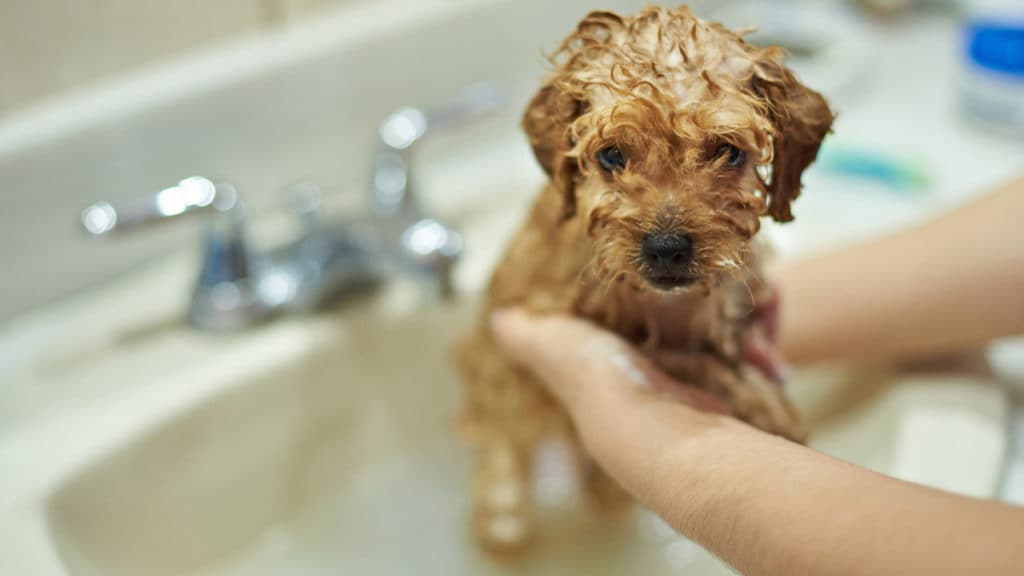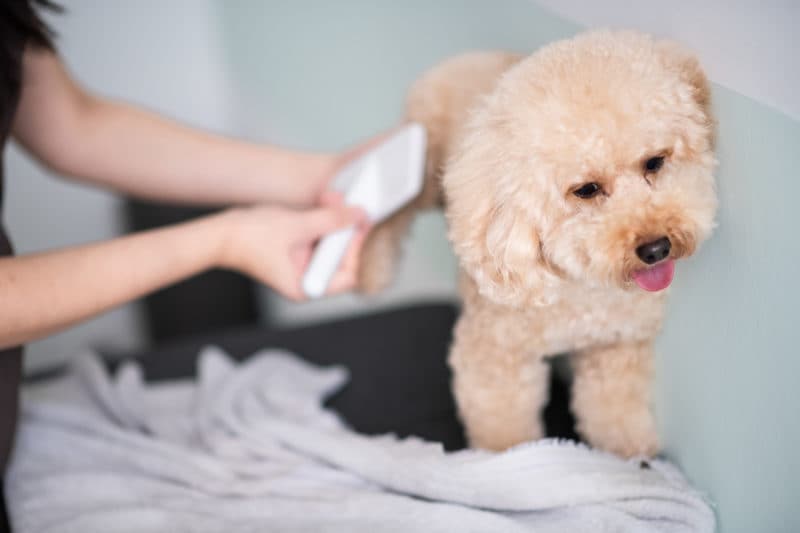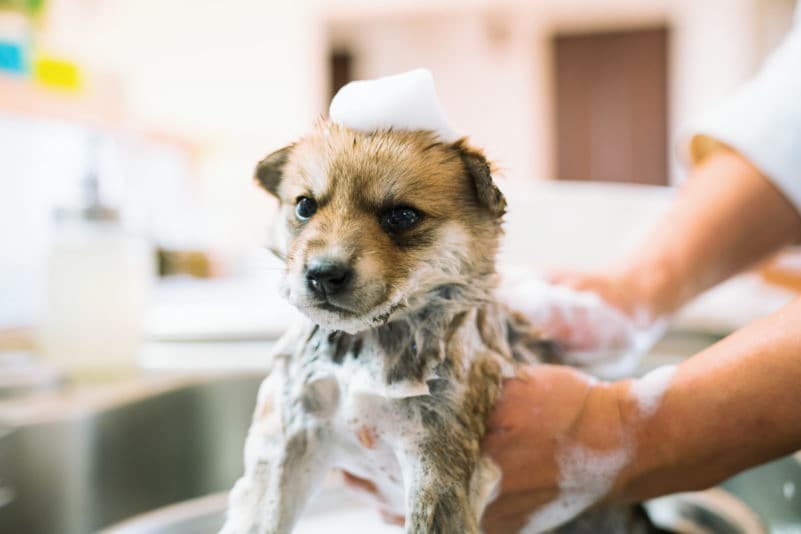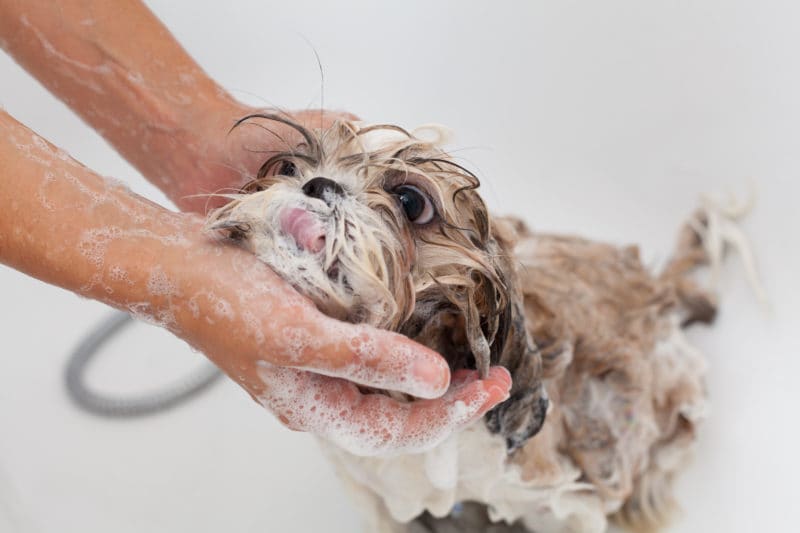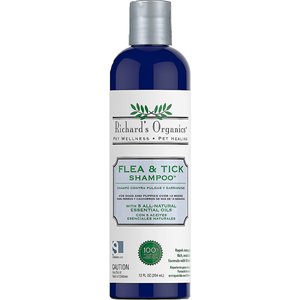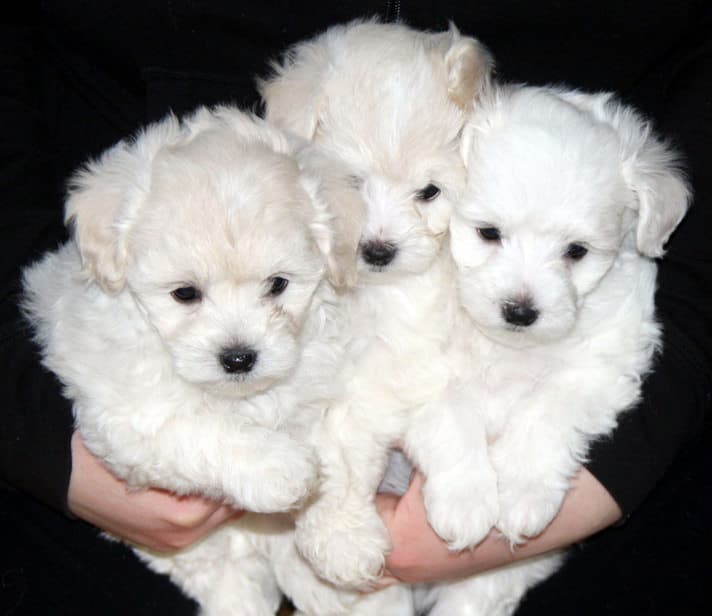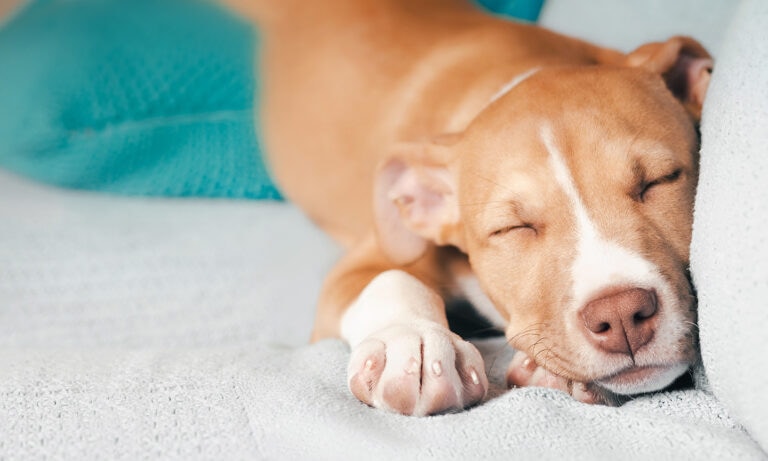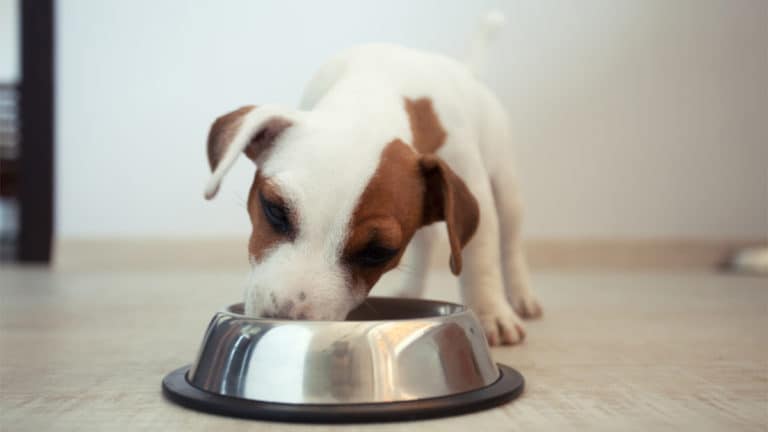When puppies are born, the mother of the puppies usually keeps them clean by licking and grooming them. But once the puppies start moving around or away from their mom, they may need a little extra help staying clean. From poop to dirt, it’s pretty easy for a puppy to get dirty.
Most times, all you need to do is sponge them off with a warm moist washcloth or use disposable wipes. But sometimes, only a bath will do.
When Can You Start Giving Your Puppy a Bath?
Even if they are just a few weeks old, if you do it carefully, you can safely bathe them. In fact, if your puppies are a breed that will require professional grooming, it’s a good idea to get them used to the bathing process early on.
How To Bathe A Puppy
It’s important for new puppy parents to learn the proper way to bathe a puppy. Ideally, you should learn before bringing your new puppy home.
Brush Before Bathing
Fluffy-coated puppies need to be brushed with a dog brush thoroughly before they are bathed. Water adds volume to mats and tangles, tightening them up during the bathing process.
Pick the Perfect Spot
Most puppies can be bathed right in the kitchen sink. Place them on a rubber mat to prevent slipping and using the dish-spray hose or a hand-held shampoo attachment used for travel, wet them down from the back end with a gentle spray so they won’t panic.
Keep the Puppy Warm
Bathing a young puppy is not much different than bathing a human baby. First and foremost, you need to keep them warm when they are bathed: a warm room, warm water that is comfortable on your own skin, a nice fluffy dog towel and warm air—not hot—from a blow dryer if they are full-coated and need blow drying.
Of course, you should never allow them to go outdoors if they are damp. Not only could they catch a chill, they just might roll in whatever is handy, including grass, gravel and mud, undoing all of your work in the process.
Use a Gentle Shampoo
In most cases, a puppy tearless dog shampoo works best, but if your baby is really stinky, you may have to use a deodorizing shampoo.
If the skin is dry or flaky, a soothing oatmeal shampoo would be a good choice, leaving the lather on for ten minutes before rinsing.
If the puppy has fleas, for safety’s sake use a natural dog flea shampoo rather than harsh chemicals to get rid of those unwelcome visitors.
Do not use shampoos made for humans; they have a different pH level and often contain harsher detergents than quality pet products.
No matter which shampoo you use, be sure to keep the lather out of the puppy’s eyes. I like to wash and rinse the face with a washcloth so spraying that area won’t be necessary. Always rinse very thoroughly as any shampoo left in the coat will cause dryness and itching.
If you start bathing puppies when they are young, bath time will be a normal experience in their lives, not a traumatic experience.
By: Kathy Salzberg, National Certified Master Groomer (NCMG)
Featured Image: PixieMe/Shutterstock
Share:
